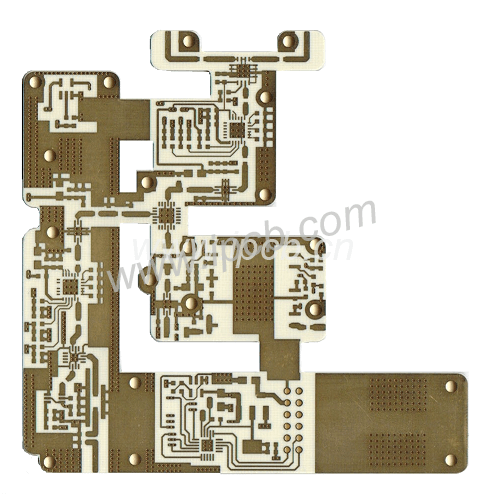Single-sided printed circuit boards were developed in the United States with the emergence of transistors in the early 1950s. At that time, the main production method was the direct etching method of copper foil. From 1953 to 1955, Japan used imported copper foil to make paper phenolic copper foil substrate for the first time, and it was widely used in radios. In 1956, after the emergence of a Japanese professional circuit board manufacturer, the manufacturing technology of single-sided panels developed rapidly. The battery circuit board has also entered the development stage. Single-sided board is on the most basic PCB, the parts are concentrated on one side, and the wires are concentrated on the other side. Because the wires only appear on one side, we call this kind of PCB a single-sided (Single-sided). Because single-sided boards have many strict restrictions on the design of the circuit (because there is only one side, the wiring cannot cross and must be around a separate path), so only early circuits use this type of board.

The double-sided board has wiring on both sides. However, to use wires on both sides, there must be a proper circuit connection between the two sides. The "bridges" between such circuits are called vias. A via is a small hole filled or coated with metal on the PCB, which can be connected with the wires on both sides. Because the area of the double-sided board is twice as large as that of the single-sided board, and because the wiring can be interleaved (it can be wound to the other side), it is more suitable for use in circuits that are more complicated than the single-sided board. The double-sided board is an extension of the single-sided board, that is, the circuit of the single-sided board is not enough to turn to the reverse side. The double-sided board also has an important feature of having a through hole. To put it simply, double-sided wiring, with wiring on both sides.
Ceramic circuit boards are the core of high-power solutions in the current era. Single-sided boards are definitely not enough. In the manufacturing process of double-sided ceramic circuit boards, through holes have become the biggest technical difficulty. Why do you say that? Because the ceramic circuit board is different from other boards, the ceramic itself is relatively brittle, and it is very easy to crack during the through-hole process, which will cause the entire board to be completely scrapped. This is also one of the reasons why most domestic ceramic circuit boards rely on imports.
There are very few domestic manufacturers that can mass produce ceramic circuit boards. Now most of the ceramic circuit boards used in China have an aperture between 0.15 and 0.5mm. What are the benefits of a small aperture? In the process of punching, the smaller the hole diameter, the smaller the internal stress generated by the ceramic circuit board, and the plate will not be easily broken. This greatly improves the qualification rate of the product, which shortens the delivery cycle for the customer, and also reduces the customer's purchase cost. As an epoch-making product, the biggest pain point of ceramic circuit boards is cost. Cost reduction means that ceramic circuit boards will have a wider range of applications. By then, the global electronics industry will have a burst of demand for double-sided ceramic circuit boards.
The application of ceramic circuit boards started late in our country, but today, we will continue to catch up with and surpass.